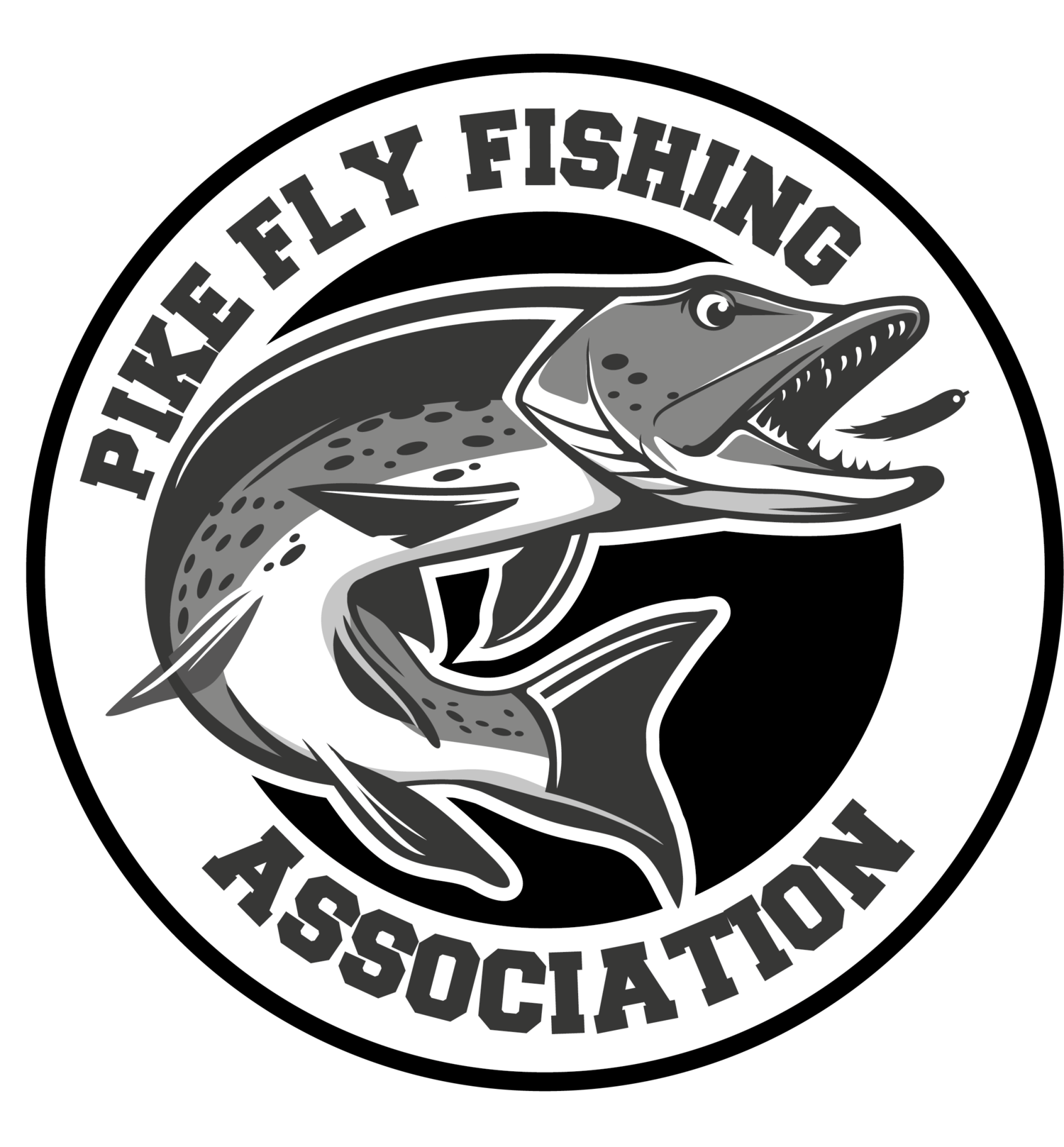
Club Guidelines
Pike Fly Fishing Association Official Guidelines
-
PFFA Recommended Guidelines
These guidelines are intended as a resource to help anglers understand some of the issues involved in fly fishing for pike, and to enable them to make appropriate decisions to ensure their own welfare and that of the fish.
-
Personal and Public Safety
- Always where suitable eye protection when fly fishing.
- Always wear a life jacket or buoyancy aid when going afloat.
- Always be mindful of the presence of others; especially when casting.
-
Minimum Tackle Requirements
- Flies should be tied on single hooks. Barbless hooks can be easier to remove.
- Always use a wire leader of not less than 25 lb. breaking strain.
- Always carry wire cutters or side cutters capable of cutting through a hook.
- Always carry suitable unhooking tools (eg. 12 inch long nose forceps).
- Use a dedicated pike or saltwater fly rod rated for at least a #9 line. Such a rod will have the backbone to land pike with a minimum of fuss.
- Have available a suitable landing net large enough to accommodate pike.
- Have available a cradle or a large unhooking mat.
-
Pike Welfare
Minimum handling = maximum conservation.
- Once the pike is in the net you should try and remove the hook and release the without it leaving the water.
- If you do remove the netted pike from the water, it must be prevented from damaging itself by thrashing about or slipping. In most circumstances an unhooking mat will be required to protect the fish whilst it is lay on the ground or in the bottom of a boat. As an alternative bubble wrap may be used, but on no account should the fish be laid upon a hard or rough surface.
- If desired the fish may be weighed and photographed before returning it to the water.
- Always use weigh slings - or an unhooking mat that doubles as a weigh sling. Never weigh a pike by suspending it from the scales by its chin.
- When taking photographs ensure the pike is kept under control and hold it close to the mat - just in case it slips.
- When returning pike to the water it is important to support them in an upright until they are ready to swim away. This can be done either by holding both flanks, or lightly gripping the wrist of the tail. Failure to support the fish until it has recovered can lead to phenomena known as gassing up. This occurs due to a build-up of lactic acid in the blood and will cause the fish to belly up. If the pike shows any signs of rolling onto its back, simply continue to support it until it can maintain itself in an upright position. You may well see that the fish is expelling bubbles from its mouth or gills and this is a good sign that it is correcting its natural buoyancy satisfactorily.
-
Warm Weather Pike Fishing
Fish can become stressed when environmental conditions are not optimal. In the case of pike this can occur when temperatures exceed 21°C and waters reduced levels of dissolved oxygen.
At such times the additional pressures placed on pike by angling can have an effect; not just on their ability to recover, but possibly even to survive. It is likely that larger adult pike are subjected to higher stress factors than smaller juvenile pike. Mortality may not occur straight away, leading the angler to mistakenly believe that a pike has fully recovered before being released.
To reduce physiological disturbances and injury that could lead to delayed pike mortality, it is suggested anglers refrain from fishing during the summer when maximum air temperatures are consistently above 21 °C for extended periods of time (3-5 days). Such conditions may lead to elevated water temperatures throughout the day and cause inherent stress to individual fish.

